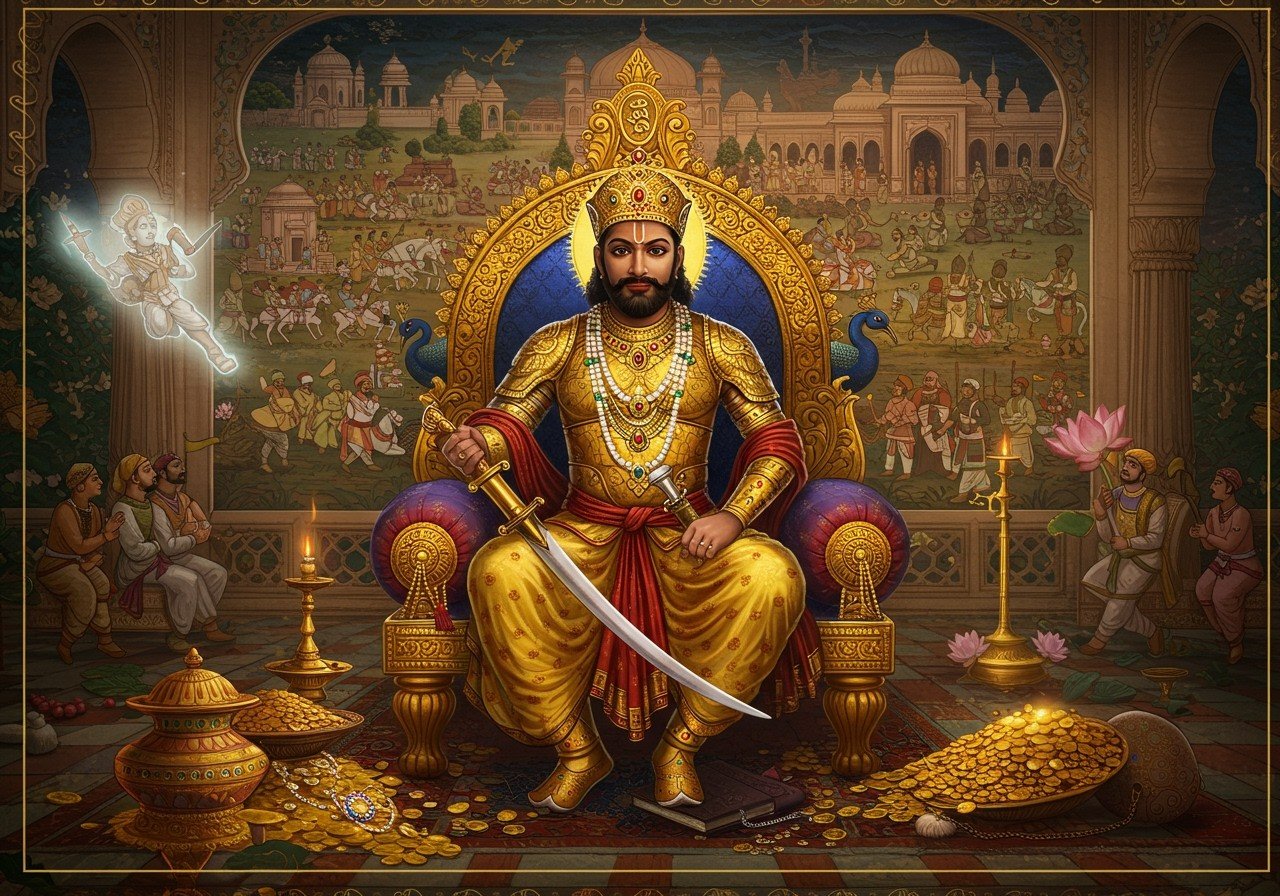
Harsha’s Empire stands as a pivotal chapter in Indian history, marking the reign of a powerful emperor and the expansion of his territories. Harshavardhana, commonly known as Harsha, governed North India from 606 to 647 CE. He was the last ruler of the Vardhana Empire, a prominent power in ancient India before the Islamic invasions. His administration, reminiscent of the Gupta Empire, emphasized freedom and rejected slavery. Harsha’s reign also signified a transition from the ancient to the medieval period in India, characterized by decentralized regional empires vying for control. This article delves into the details of his empire, exploring its growth, administration, cultural achievements, and eventual decline.
The Rise of Harsha’s Empire
Harshavardhana’s ascent involved strategic alliances and military conquests. Following the assassination of his elder brother and the demise of his father, Harsha assumed the throne. He consolidated his power in Thanesar and embarked on a mission to unify northern India.
- Conquest of Kannauj: Harsha’s conquest of Kannauj was a significant victory, establishing it as his capital and a major center of his empire. This strategic location allowed him to control vital trade routes and project power across northern India. Kannauj became a hub of cultural and intellectual activity under his rule.
- Territorial Expansion: Harsha’s empire encompassed a large swathe of northern India, including regions like Bengal, Punjab, and Gujarat. He achieved this through military campaigns and strategic alliances, consolidating his control over diverse territories. This expansion led to a period of relative stability and prosperity in the region.
- Strategic Alliances: Harsha forged marriage alliances and treaties with other regional powers. These alliances helped secure his borders and fostered political stability. They also facilitated trade and cultural exchange between different regions of India.
- Effective Administration: Harsha implemented an efficient administrative system that contributed to the stability and growth of the empire. This involved appointing capable officials, establishing clear lines of authority, and implementing just laws. The administration focused on revenue collection, infrastructure development, and promoting education.
- Religious Patronage: Harsha, a devout Buddhist, extended his patronage to Buddhism, establishing numerous monasteries and universities. He also supported other faiths, fostering religious tolerance within his empire. This contributed to a rich and diverse cultural environment.
At its zenith, Harsha’s Empire stretched across vast territories of North India.
Administration of Harsha’s Empire (606-647 CE)
Harsha’s administration was renowned for its centralized and efficient structure.
- Government Structure: Key officials and ministers played crucial roles in the administration of the empire. They were responsible for various departments, including revenue, justice, and military affairs. This structured hierarchy ensured smooth governance.
- Administrative Divisions: The empire was divided into provinces and districts for effective governance. This allowed for better management of resources and more responsive administration at the local level.
- Revenue System: Taxes were collected systematically, contributing to the financial stability of the empire. The revenue system was designed to be fair and efficient, supporting public works and other state initiatives.
- Judicial System: Harsha prioritized justice and order through a well-organized judicial system. He implemented laws and established courts to ensure fairness and resolve disputes.
- Military Organization: A strong and well-equipped military maintained control over the vast empire. The military was instrumental in defending the empire’s borders and suppressing rebellions.
- Infrastructure Development: Harsha invested in infrastructure development, including roads, bridges, and irrigation systems. These projects facilitated trade, improved communication, and boosted agricultural productivity.
- Education: Harsha’s patronage extended to education. He supported Nalanda University and other centers of learning, fostering intellectual growth and scholarship within the empire.
Cultural Achievements and Contributions
Harsha’s reign witnessed significant cultural and intellectual advancements.
- Literature and Arts: Literature flourished under Harsha’s rule, with poets like Banabhatta producing notable works. The arts also thrived, with advancements in music, dance, and drama.
- Harsha’s Writings: Harsha himself was a scholar and writer, contributing plays like “Nagananda,” “Ratnavali,” and “Priyadarsika.” These works offer valuable insights into the culture and society of his time.
- Architecture: The construction of stupas and temples during Harsha’s reign showcases the architectural styles of the period.
- Religious Tolerance: Harsha promoted religious tolerance, supporting various practices, including Buddhism, Hinduism, and Jainism. This fostered peaceful coexistence and cultural exchange between different religious communities.
- Cultural Festivals: Festivals and public ceremonies served to promote unity and cultural heritage. These events brought people together and reinforced a sense of shared identity.
- Spread of Buddhism: Harsha’s patronage played a vital role in the spread of Buddhism and the establishment of educational institutions like Nalanda University.
- Cultural Artifacts: Significant cultural artifacts from this period, including sculptures, inscriptions, and coins, provide valuable insights into the rich artistic and cultural heritage of Harsha’s Empire.
The Decline of Harsha’s Empire
Despite its initial strength, Harsha’s Empire eventually faced a decline.
- Internal Factors: Administrative inefficiencies and internal conflicts gradually weakened the empire from within.
- External Pressures: Invasions by regional powers posed a constant threat to the empire’s stability.
- Succession Issues: The absence of a clear heir after Harsha’s death in 647 CE led to power struggles among successors, further destabilizing the empire.
Poojn.in: Connecting You with India’s Rich Heritage
As you delve into the fascinating history of Harsha’s empire, you might be inspired to connect with your own cultural heritage. At Poojn.in, India’s leading online store for cultural and religious goods, we offer a wide selection of products to help you honor and celebrate India’s rich traditions. Whether you’re looking for puja items, religious texts, or spiritual artifacts, Poojn.in provides a convenient and authentic platform to explore and embrace your cultural roots.
Explore authentic puja items and connect with your heritage at Poojn.in.
Conclusion
Harsha’s Empire remains a significant period in Indian history, reflecting a time of unity, cultural flourishing, and eventual fragmentation. His rule, though ultimately transient, left an indelible mark on the Indian subcontinent, shaping its political, cultural, and religious landscape. Understanding Harsha’s Empire allows us to appreciate the complexities and achievements of this remarkable era.


